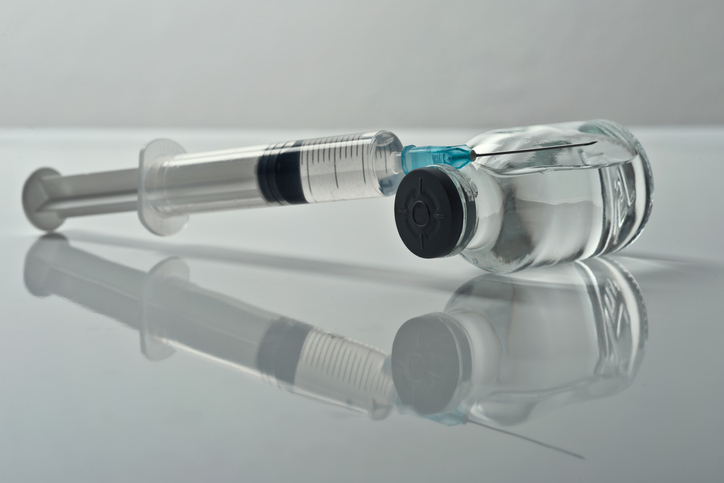Health
BioCryst Acquires Astria for $700M to Compete in HAE Market

BioCryst Pharmaceuticals has announced its acquisition of Astria Therapeutics for $700 million, positioning itself to enhance its offerings in the hereditary angioedema (HAE) market. This strategic move aims to provide patients with a less frequent dosing option for preventing swelling attacks associated with this rare disease.
Patients currently rely on injectable medications that require administration every two weeks to every two months. The acquisition of Astria, which is developing an injectable kallikrein inhibitor named navenibart, could potentially reduce this to as few as two injections per year. BioCryst, based in Durham, North Carolina, already markets Orladeyo, a once-daily oral medication designed to prevent HAE attacks by blocking the kallikrein protein involved in swelling.
Details of the Acquisition and Clinical Trials
Astria Therapeutics, located in Boston, is currently conducting a global Phase 3 clinical trial for navenibart. This trial includes various dosing regimens, testing an initial dose of 600 mg followed by 300 mg every three months, 600 mg every six months, or another 600 mg every three months. The primary goal is to measure the number of HAE attacks over a six-month treatment period, with preliminary results expected by early 2027.
BioCryst’s portfolio is heavily invested in HAE treatments, particularly with Orladeyo, which generated $437.6 million in sales last year. Anticipated FDA decisions regarding an oral granule formulation of Orladeyo for children aged 2 to 11 are expected by December 12, 2023.
As competition intensifies in the HAE therapy market, BioCryst faces significant rivals, including Takeda Pharmaceutical, which has the leading drug, Takhzyro, an FDA-approved kallikrein inhibitor requiring injections every two weeks. Recent approvals for two new HAE drugs have further diversified patient options. CSL Behring launched Andembry in June, a monthly injection, followed by Ionis Pharmaceuticals with Dawnzera, an antisense oligonucleotide administered monthly or bi-monthly.
BioCryst’s acquisition of Astria could position navenibart as a leading therapy option, offering a three- to six-month injection schedule that may enhance patient adherence and reduce injection site pain.
Market Dynamics and Future Projections
During an investor call on October 14, 2023, BioCryst’s Chief Commercial Officer, Charlie Gayer, emphasized the growing demand for less burdensome dosing options among HAE patients. “The market isn’t looking for more efficacy; what it’s looking for is less burdensome dosing,” he stated.
BioCryst projects that its HAE portfolio, driven by Orladeyo and the potential success of navenibart, could generate up to $1 billion in revenue by 2029 and exceed $1.8 billion by 2033. The company continues to explore other rare disease treatments, including BCX17725, an early-stage protein drug for Netherton syndrome, which currently lacks FDA-approved therapies.
The terms of the acquisition include $8.55 in cash and 0.58 shares of BioCryst common stock per Astria share, valuing the latter’s shares at approximately $13, a 53% premium over its pre-announcement closing price. To support the cash requirements, BioCryst has secured up to $550 million in debt financing managed by Blackstone.
Pending necessary approvals from regulatory bodies and Astria shareholders, the transaction is expected to close in the first quarter of 2026. Following the merger, Astria’s CEO, Jill Milne, will join the BioCryst board, and Astria’s shareholders will hold around 15% of the combined entity.
BioCryst’s acquisition of Astria not only strengthens its position in the HAE market but also highlights its commitment to expanding its product offerings for rare diseases.
-

 Science2 weeks ago
Science2 weeks agoIROS 2025 to Showcase Cutting-Edge Robotics Innovations in China
-

 Politics2 weeks ago
Politics2 weeks agoJudge Considers Dismissal of Chelsea Housing Case Citing AI Flaws
-

 World2 weeks ago
World2 weeks agoBravo Company Veterans Honored with Bronze Medals After 56 Years
-

 Lifestyle2 weeks ago
Lifestyle2 weeks agoStone Island’s Logo Worn by Extremists Sparks Brand Dilemma
-

 Top Stories2 weeks ago
Top Stories2 weeks agoIndonesia Suspends 27,000 Bank Accounts in Online Gambling Crackdown
-

 Sports2 weeks ago
Sports2 weeks agoMel Kiper Jr. Reveals Top 25 Prospects for 2026 NFL Draft
-

 Health2 weeks ago
Health2 weeks agoStartup Liberate Bio Secures $31 Million for Next-Gen Therapies
-

 Health2 weeks ago
Health2 weeks agoTop Hyaluronic Acid Serums for Radiant Skin in 2025
-

 World2 weeks ago
World2 weeks agoHoneywell Predicts Record Demand for Business Jets Over Next Decade
-

 Politics2 weeks ago
Politics2 weeks agoNew Jersey Voters Urged to Register Ahead of November Election
-

 Lifestyle2 weeks ago
Lifestyle2 weeks agoMary Morgan Jackson Crowned Little Miss National Peanut Festival 2025
-

 Sports2 weeks ago
Sports2 weeks agoYamamoto’s Mastery Leads Dodgers to 5-1 Victory in NLCS Game 2









